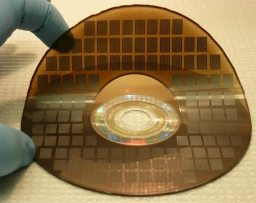Imagine plugging in your smartphone for thirty seconds and then continuing the rest of your day with a fully charged phone. Then imagine plugging in your electric vehicle for less time than it takes to fill up a standard gas tank before running a day’s worth of errands on that one charge. Today, researchers at UCLA may have used some everyday, easily available technology and graphene — a strong, flexible and highly conductible carbon product — to make this dream of energy storage a reality.
The magic is in the idea of a supercapacitor. Typical batteries store a lot of energy, but it takes a long time for that energy to collect. Capacitors charge quickly, but they don’t hold the charge very long. Supercapacitors take the best of both these technologies to create a device that charges quickly and will hold a large amount of energy for a long time. Micro supercapacitors bring this technology down to a scale appropriate for cell phones and laptops.
The major problem has been that the process for creating these micro structures was not cost-efficient, and therefore limited the appeal to investors.
A recent breakthrough by UCLA professor Richard Kaner and grad student Maher El-Kady to use a laser optical drive (usually used to label DVDs) and graphene – readily made from available material – to mass produce these micro supercapacitors (a research project CleanTechnica reported on back in March 2012). The researchers published their findings in the February 2013 issue of Nature Communications.
Kaner and El-Kady see the benefit for the micro supercapacitors in permanent structures such as biomedical implants, but some of the most exciting applications lay in the renewable energy sector.
Renewable energy production methods such as wind and solar are great options for reducing the need for energy derived from fossil fuels. The intermittent nature of these methods, however, could pose a problem down the line for the proliferation of these energy technologies. Having a battery to store the energy generated by wind turbines and solar panels will provide a constant stream of energy whether or not the sun is shining or the wind is blowing.
Professor Kaner is now in the process of seeking funding for mass production of the graphene micro supercapacitors. If realized, this could be the first step to a revolution in the marriage of renewable energy methods and energy capture. It will be very interesting to see how this nascent technology is implemented. What is best for the consumer isn’t always what’s best for the energy company. Having a way to cheaply store and deliberately release energy produced using sustainable methods signals a radical and long-awaited boost to this sector. If the production were applied to renewable energy storage, we would then see a corollary increase in solar, wind, and thermal home and commercial manufacture and installation. This increase has related tributaries of growth potential in solar and wind job training, manufacturing, shipping, installation, and maintenance industries. Whatever direction the development of Kaner and his team’s micro supercapacitors, if it works on a large scale we can look forward to major changes with long-reaching repercussions.
Here’s a video on the project:
The Super Supercapacitor | Brian Golden Davis from Focus Forward Films on Vimeo.








